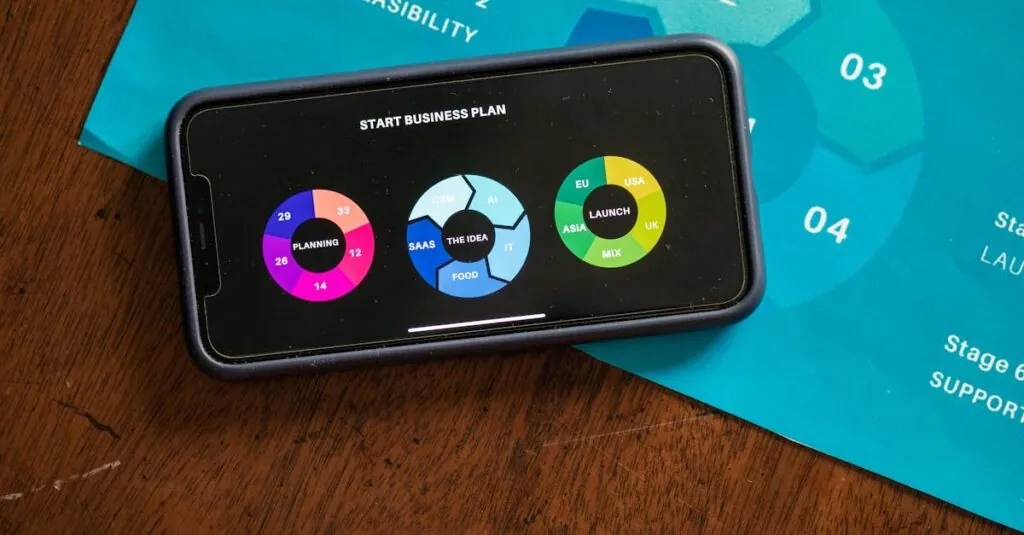Table of Contents
ToggleIn the fast-paced world of Software as a Service (SaaS), things can go south quicker than a cat on a hot tin roof. One moment, a shiny new feature is the talk of the town, and the next, it’s causing chaos and confusion among users. That’s where a solid rollback strategy comes into play. Think of it as your safety net, ready to catch you when that latest update turns into a digital disaster.
Having a rollback strategy isn’t just smart; it’s essential. It ensures that when things go awry, you can hit the reset button faster than you can say “oops.” This article dives into the ins and outs of creating an effective rollback strategy, helping you keep your SaaS platform running smoothly while maintaining user trust. After all, nobody wants to be the one who accidentally breaks the internet—again.
Understanding SaaS Rollback Strategy
SaaS rollback strategies play a crucial role in maintaining service reliability. These strategies ensure organizations can quickly revert to previous software versions when issues arise.
Definition of SaaS Rollback
SaaS rollback refers to the process of reverting a software application to a previous stable version. Such a process occurs after an update or change fails to function as intended. Companies implement rollback for critical updates that cause significant problems or downtime. The goal remains to restore normal functionality with minimal disruption. Rollback can involve restoring databases, application code, or configuration settings, depending on the specific scenario.
Importance of Rollback Strategies
Rollback strategies prove vital in the SaaS environment due to the fast-paced nature of software development. They minimize downtime when issues emerge from newly deployed features. Customer satisfaction often hinges on maintaining a seamless experience, making quick recovery essential. Businesses that implement rollback strategies enhance user trust and protect their brand reputation. Data from recent industry analyses indicates that effective rollback strategies can reduce service downtime by up to 80%. Supporting operational resilience, these strategies further ensure compliance with service level agreements (SLAs).
Common Scenarios for Rollback
Rollback strategies become vital in various scenarios within the SaaS landscape. These scenarios often require reverting to previous versions to maintain system stability and user confidence.
System Updates and Improvements
System updates sometimes introduce unexpected behavior or compatibility issues. Companies may roll back an update if users experience significant disruption. Ensuring a seamless user experience involves prioritizing stability over new features. For instance, if an update leads to performance slowdowns, reverting to a previous version can quickly restore functionality. Frequent monitoring during and after updates helps identify these issues early. Quick decisions can minimize operational downtime, often preserving user satisfaction and trust.
Bug Fixes and Reversions
Bug fixes occasionally introduce new problems, prompting the need for a rollback. Users encountering more significant issues can signal the necessity of a reversion. Prioritizing the resolution of such bugs ensures a stable environment for all users. Immediate rollback to a functional version mitigates adverse effects on service quality. Regular testing before deploying fixes may prevent these situations. Keeping thorough logs of changes supports efficient tracking and faster reversion in case of emergencies.
Best Practices for Implementing Rollback
Implementing a rollback strategy requires careful planning to ensure service reliability. Prioritizing data integrity and minimizing downtime are key components in achieving this objective.
Prioritizing Data Integrity
Ensuring data integrity during a rollback process is essential. Regular backups protect against data loss, allowing the restoration of the most recent stable version. Engineers should implement versioning protocols to track changes effectively. Documenting every alteration aids in identifying when issues occurred. Utilizing automated testing reduces the chances of introducing bugs that could compromise the system. Streamlined communication across teams helps address potential conflicts swiftly. Implementing these practices enables organizations to maintain a high level of data consistency and user trust.
Minimizing Downtime
Reducing downtime is crucial for maintaining service continuity. Creating detailed rollback procedures allows teams to act quickly when issues arise. Using canary releases or feature flags helps isolate problems without affecting the entire user base. Conducting thorough testing prior to updates minimizes the likelihood of rollback situations. Monitoring system performance continuously helps teams catch anomalies early. Having a dedicated incident response team ensures rapid resolution of issues. By prioritizing these approaches, organizations can significantly enhance operational resilience, keeping user satisfaction high.
Tools and Technologies for Rollback
Implementing an effective rollback strategy requires the right tools and technologies. These resources streamline the process, ensuring efficiency and reliability during critical updates.
Popular SaaS Tools
Many SaaS tools cater to rollback needs. Git allows version control, enabling developers to track and revert changes easily. Docker provides containerization, making application deployment straightforward and rollback seamless. Additionally, Kubernetes helps manage containerized applications with features that facilitate rollbacks to previous states. Tools like Terraform support infrastructure as code, allowing teams to quickly revert changes to cloud configurations. Monitoring solutions like Prometheus are vital for detecting issues early, ensuring timely rollbacks and minimizing disruption.
Integration with CI/CD Pipelines
Integrating rollback strategies into CI/CD pipelines enhances responsiveness. Continuous integration tools automate testing, which is crucial for identifying errors before deployment. Effective deployment strategies include blue-green deployments, allowing teams to switch between versions without downtime. Continuous delivery frameworks incorporate automated rollbacks, enabling quick reversion when issues arise post-release. This process fosters rapid recovery, preserving user experience and maintaining service reliability. By embedding rollback strategies into CI/CD workflows, organizations enhance operational resilience and ensure compliance with SLAs.
Conclusion
A well-defined rollback strategy is essential for any SaaS provider aiming to maintain reliability and user trust. By preparing for potential issues with effective rollback procedures organizations can minimize downtime and enhance customer satisfaction. Regular testing and monitoring ensure quick identification of problems allowing for swift action when needed.
Emphasizing best practices like version control and automated testing can significantly streamline the rollback process. Investing in the right tools and integrating rollback strategies into CI/CD pipelines further enhances operational resilience. Ultimately a robust rollback strategy not only safeguards against disruptions but also reinforces the commitment to delivering a seamless user experience.




